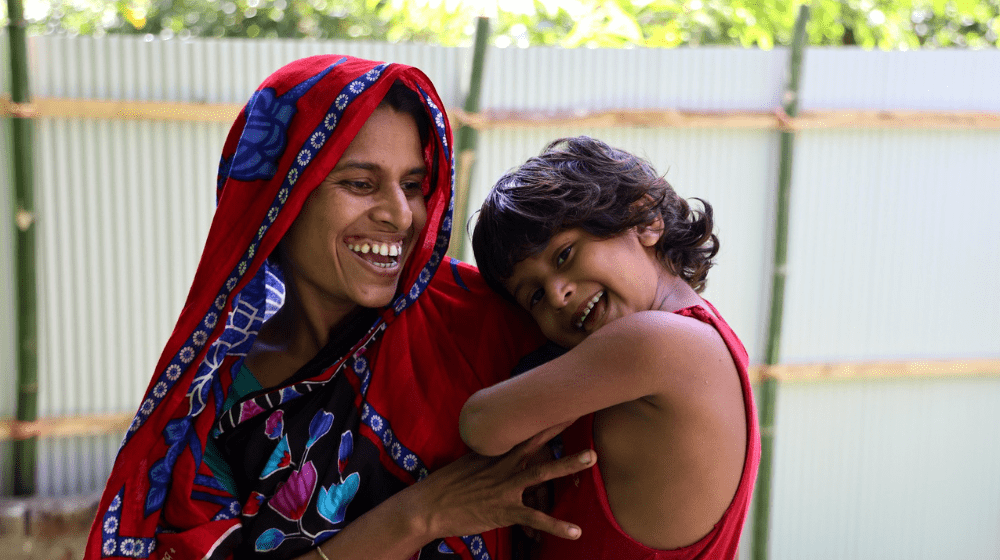On World Population Day, UNFPA Asia-Pacific Regional Director, Bjorn Andersson, stresses on why it is important for governments to ensure population and development policies are centered on gender equality and human rights, thereby enabling and empowering women to make independent decisions about their reproductive health.
Does the world have too many or too few people? The answer is that there is no perfect population number, and that policies that focus on fertility rates, undermine the reproductive rights and choices of women and girls. This message was reinforced in UNFPA’s recently published State of World Population Report, which shed light on the diverse perspectives across the globe around population dynamics and the potential impact it can have on society.
With more than half of the world’s 8 billion people living in Asia and the Pacific, of whom over 50 per cent are women and girls, the discourse on population dynamics is a major opportunity to change how governments and societies think and talk about demographic trends, including fertility rates.
In the past, many countries strove to attain what they considered a perfect population number. Today, countries have come to realize through difficult experiences that setting population targets do not provide solutions to issues such as struggling economies and the climate crisis. In fact, it frequently results in the infringement of human rights and individual freedoms, especially when women face pressures to procreate or encounter barriers preventing them from doing so. In instances where population growth is slowing down, this can lead to the implementation of severe measures like imposing restrictions on contraception. Similarly, countries grappling with increasing birth rates implemented policies that limited the number of children a couple could have and in darker times, sought oppressive and irreversible practices such as involuntary sterilization.
In 1994, the historic International Conference on Population and Development brought countries together in agreement that the reproductive rights and choices of women and girls must be placed at the heart of population and development policies. Almost thirty years on, while much progress has been made, thousands of women and girls across Asia and the Pacific still have limited or no access to quality sexual and reproductive health services and information, and those from marginalized communities continue to live in poverty, excluded from education and employment.
Why are women not able to make independent decisions to build the life, family, and career that they desire? Gender inequality is at the root of the issue.
For instance, a woman may have to choose between having a baby or choosing her career because of the lack of sharing of responsibilities at home or the lack of flexible working arrangements in her workplace. She may also grow up unaware of her reproductive choices and the power she holds in shaping her own future. Even if she were aware, she may not be able to access contraceptives because of policies hindering family planning or simply, due to lack of quality services.
Widespread injustice and inequalities hamper the access of women and girls to education, healthcare, employment opportunities, and leadership roles. It curtails their autonomy and capacity to make informed choices concerning their own sexuality, and reproductive health, and amplifies their susceptibility to avoidable maternal mortality, gender-based violence, and harmful social norms.
When women are empowered, they can shape societies and countries at large.
For example, let’s look at the life of Rasini. Today, she is a 35-year-old mother of a newborn baby girl, and is a senior manager of a leading telecommunications company. As a young girl, she had access to sexuality education, and as a young adult she completed a degree and pursued a demanding career, deciding when she would be ready to build a family of her own.
While Rasini had an enabling home environment with her parents and her husband supporting her decisions, she also had access to enabling systems and services. Family friendly policies, social protection schemes and employment practices that encourage work-life balance and alleviate the care burden are crucial in providing women the independence to make an informed decision about their reproductive choices. Policies that support women who choose to delay or not have children are equally important, increasing access to family planning services, including contraception, allowing for pregnancies to be planned. Such policies that are rooted in gender equality enable and empower women to exercise their reproductive rights, and in turn helps to build individuals, families, communities, and nations that are based on the principles of human rights.
While Rasini’s story is the perfect example, it is not the everyday story.
As fertility rates increase or decline, women must not be pressured by governments or society to have children - or not have children.
Ensuring gender equality means ensuring investments are made in every stage of a woman’s life - from childbirth to adolescence to adulthood. Every girl should have access to comprehensive sexuality education, so that she can navigate her adolescent years and make informed choices about life-changing matters. Every woman should have access to quality sexual and reproductive healthcare and services, including maternal healthcare for safe birth, as well as contraception, if she wants to avoid pregnancy. And every woman should be able to make her career and life choices so that she can plan for her elder years and age with dignity.
It is with this holistic approach, embedded in human rights that focuses on every stage of a woman’s life that resilient societies, communities, and countries can thrive, whatever their fertility rate may be. It is only when population and development policies focus on the rights of an individual that we can create infinite possibilities for all.



